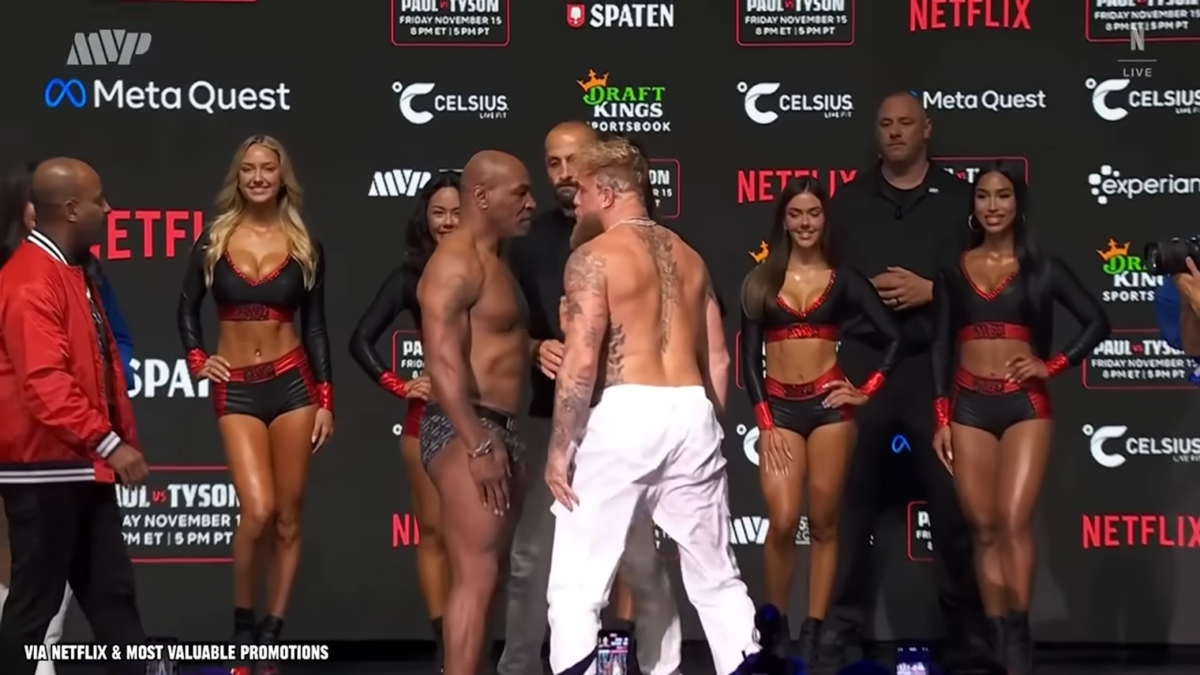
Ultimate Fighting Championship champion Ronda Rousey will be starring in a remake of the 1989 action film “Road House,” and her biggest worry is that she’ll “suck” and everyone will hate her. That’s surprising coming from a woman who has been viciously maligned for refusing to face transgender fighter Fallon Fox in the ring. For months, the social-justice warriors have taken to social media, calling her a hater, “super transphobic,” a “horrendous bigot,” and other unmentionable slurs. Compared to that, her acting debut will be a walk in the park.
When Fallon Fox (born Boyd Burton), a 39-year-old ex-military man and father, came out as transgendered, a storm of controversy was unleashed over whether an athlete who has been born a man should be allowed to compete in a contact sport as a woman. Rousey, along with Invicta Fighting Championships and the Ultimate Fighting Championship (UFC), said Fox shouldn’t.
“She can try hormones, chop her pecker off, but it’s still the same bone structure a man has,” Rousey said in 2014. “It’s an advantage. I don’t think it’s fair. . . I’ve tried to research it a lot. I feel like if you go through puberty as a ‘man’ it’s not something you can reverse. . . . There’s no undo button on that.”
‘I’ve Never Felt so Overpowered in My Life’
UFC President Dana White, who has refused to give Fox the green light to fight Rousey, agreed: “Bone structure is different, hands are bigger, jaw is bigger, everything is bigger. I don’t believe in it.”
Mixed martial arts fighter Tamikka “Boom Boom” Brents knows what it’s like to face Fox in the ring, and she felt the difference immediately. In just two minutes, Fox knocked her out, fracturing her orbital bone, giving her a concussion, and inflicting extensive soft-tissue injuries. Leading up to the fight, male lesbians in the transgender community rallied around Fox, urging him to spill blood and destroy the “noisy hater” Brents, who is a well-known female lesbian. The furor surrounding the event exposed the bloodlust of some in the transgender community and their bitter hostility toward lesbian women.
“I’ve fought a lot of women and have never felt the strength that I felt in a fight as I did that night,” Brents said. “I can’t answer whether it’s because she was born a man or not because I’m not a doctor. I can only say, I’ve never felt so overpowered ever in my life, and I am an abnormally strong female in my own right.” Fox’s grip was different, Brents continued. “I could usually move around in the clinch against other females but couldn’t move at all in Fox’s clinch.”
Sure, Men Can Take Over Women’s Sports
Fox, who has a 5-1 record, has responded to critics, saying, “I’m quite sure that there are quite a few female MMA fighters who have the guts to fight another skilled woman without peeing their panties. . . . I think they may be a little more mentally tough and say, ‘I’ll fight a trans woman, just like I’ll fight a lesbian woman or a black woman.’ They may throw all kinds of backwards, bogus bone density or bone structure arguments in it to possibly save face if they lose — because they sense that people are ignorant on bones within sport, but at least some of them are the real deal in the way of fighting.”
Fox insists he has no advantage over regular females (he even thinks he has a disadvantage), and there’s a growing consensus among medical professionals to back him up. After meeting with doctors and medical experts, the International Olympic Committee decided to allow transgender athletes to compete if they are able to meet three requirements: they’ve had gender reassignment surgery, they have legal recognition of their assigned gender, and they’ve had at least two years of hormone therapy. The National Collegiate Athletic Association has less-stringent guidelines, which they adopted in 2011. They don’t require surgery, and they only require one year of hormone therapy for male-to-female athletes.
The medical professionals who advised the NCAA declared that any assumption that a transgender woman competing on a women’s team would have a competitive advantage outside the range of performance and competitive advantage or disadvantage that already exists among female athletes is not supported by evidence.
Dr. Marci Bowers agrees, saying “Most measures of physical strength minimize, muscle mass decreases, bone density deceases, and they become fairly comparable to women in their musculature.”
The Controversy Over Fox’s Single Loss
Another doctor, Sherman Leis, said post-operative transgender women typically have less testosterone than their counterparts. Fox made much of this point after suffering his single loss in 2013 to bantamweight fighter Ashlee Evans-Smith, claiming that he had muscle fatigue in the later rounds and this gave Smith an advantage.
Following the fight, Smith said, “I won because I hit harder, grappled better, had better ground techniques, cardio and leg strength.” Despite her win, Smith said Fox shouldn’t fight women—or men, for that matter. “I feel like there should be a unique organization for those needs,” she said. “She did have an advantage. She definitely did.”
Some have claimed Fox threw the fight so he could claim he doesn’t have an advantage over women. Fox said these rumors are ridiculous and offensive. “I mean, as if I would have someone beat on my face with 4-ounce gloves, you know, in the middle of a championship round where I have the chance of winning $20,000 and moving on with my MMA career,” he told NPR.
To add even more intrigue to the controversy, Smith was suspended earlier this year for cheating. The fighter was issued a nine-month suspension after testing positive for the drug diuretic hydrochlorizide.
Many Female Fighters Don’t Feel Safe
Regardless of Smith’s victory and the debate surrounding it, several fighters still don’t think Fox should be in the ring with women. Allanna Jones, who fought Fox and lost (and who made her entrance to Aerosmith’s “Dude Looks Like a Lady”) has said that whether or not Fox now walks as a “woman,” he “was still born and developed as a man.” In fact, he spent more than three decades of his life as a man before starting hormone therapy and continuing to have surgeries to change his genitalia.
Miesha Tate, a former Strikeforce belt holder, told ESPN she would not fight Fox, and she would only consider it if research proved he is “100 percent like a female.”
“I just have a lot of questions and I don’t feel there’s been enough research to safely say it’s okay for Fallon Fox to fight other females,” Tate said. “My concern is that she went through puberty as a man.”
Dr. Johnny Benjamin, a medical columnist and consultant at MMAjunkie.com, agrees, saying the science just isn’t conclusive. While he is sympathetic to the LGBT community, he says the issue of safety is too important.
“Contact and combat sports in particular are very different from finesse non-contact sports,” Benjamin wrote. “In combat sports, one very important facet of the encounter is to inflict sufficient force upon your opponent to provoke him or her to submit, voluntarily or involuntarily. Physical pain and the potential for injury of varying degrees are omnipresent and inherent to these sports. With this in mind, player safety must be of primary importance; assume nothing and err on the side of caution and player safety.”
The Safety Questions Are Real
Player safety is the reason weight classes are mandated in boxing and MMA. There are no such requirements in track and field. In non-contact sports, the transgender question is about fairness, but in contact sports it’s about lives.
“Without question, hormonal therapy and gender-reassignment surgery can make a person look more feminine, but does it change the physical performance capacity to that of a non-transgender woman?” Benjamin asks. “Does hormonal therapy and gender-reassignment surgery make the transgender female perform athletically like a non-trans female—or is there a performance advantage that may create a level of unacceptable danger to an opponent?”
These are simple, unbiased, health and safety questions. What does the scientific research actually tell us? “Unfortunately, pitifully little, if anything,” he says. “This very specific and important question has not been adequately and scientifically investigated. Many medical professionals have voiced well-phrased opinions regarding muscle mass and bone density, but none has cited specific, scientifically supported information that answers the athletic/physical performance capacity question. Hunches, gut feelings and anecdotal experience don’t pass muster in the medical arena, when a person’s heath, well-being and life are truly at stake.”
Until we better understand the performance capacity of transgender athletes, it’s best not to allow them to compete in contact sports. Of course, such a reasoned argument is still considered bigoted and transphobic by many in the transgender community and those who support it. But why should a woman put herself into the position of being beaten to a pulp by a man just to satisfy the emotional yearnings of a community that itself is unclear about gender distinctions and the exact nature of their dysphoria?
Being Born Male or Female Makes a Difference
One thing is for certain, there is a marked distinction between a woman who is born female and doesn’t have to take medications to create the semblance of “femaleness” and a man pumped up on estrogen. The moment the hormone therapy stops, the man transitions in reverse, slipping back to his true form (with or without the penis).
Many men, like Walt Heyer, who have lived “transgender lives” are now living according to their natural gender—and with a lot of regret. Many have shared how they longed to be a woman, but no amount of surgery could give them an “actual female body.” They felt like they were living a lie.
Gender shouldn’t be determined by artificial, non-permanent constructs, but by naturally fixed factors, even when those realities oppose the fantasies of a fluid mind. Instead of encouraging delusion, maybe we should encourage sanity—otherwise we’ll continue to have conflicts like those in the sports world, where common sense and even personal safety are sacrificed on the altar of politically correct “tolerance.”
This Time, Women Really Are the Victims
Regardless of how this controversy plays out in mixed martial arts, transgender is now an issue in all sports and at all levels. In some cases, males who identify as female remain on male teams, such as American Samoa soccer player Jaiyah Saelua, who said, “I’m not a male or a female—I’m just a soccer player.” In other cases, women remain on female teams even though they identify as a man (and as long as they’re not taking testosterone), such as Kye Allums, a former women’s basketball player at George Washington University.
The real sticky controversy, however, coalesces around men who identify as women and want to compete in female leagues. We don’t hear a lot of female-to-male athletes challenging the World Boxing Association to let them fight Wladimir Klitschko. So the issue is more a male-to-female controversy, and when female athletes refuse to play along, they’re called homophobes and bigots. They’re attacked, and social-justice warriors take to the Internet to malign their character.
Safety doesn’t matter. It’s all about getting what they want, regardless of who’s hurt. That’s definitely apparent in the blind devotion to Fox, with supporters yelling for the bloody annihilation of his enemies, calling people like Rousey hateful and bigoted.
The fact is, female athletes who don’t want to subject themselves to male battery are hardly transphobic. They’re not haters, and they’re not “vile, nasty, gross fear-mongers.” They are simply exercising common sense—something that is sorely missing in today’s society.









